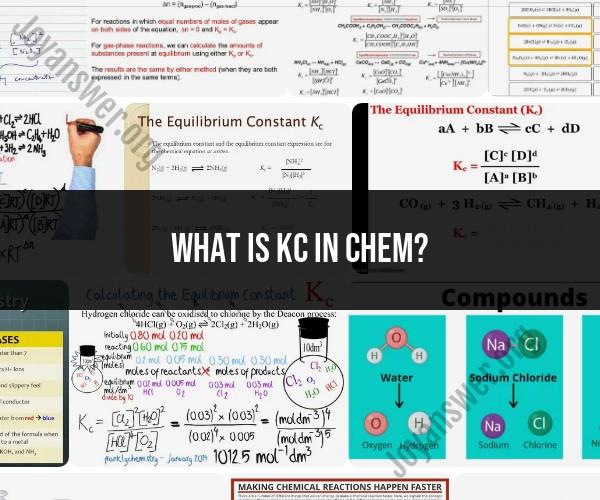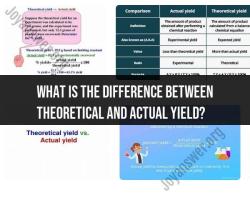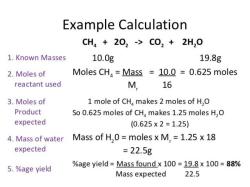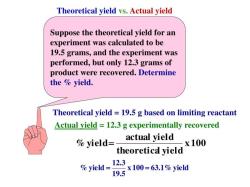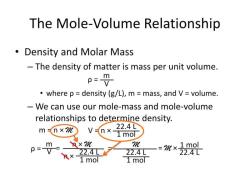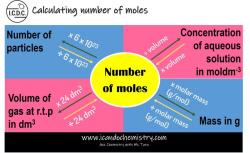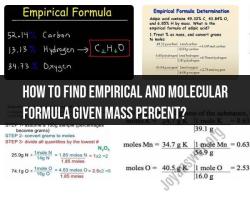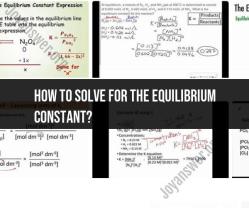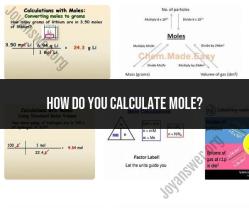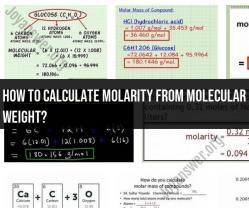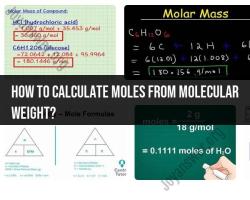What is KC in Chem?
In chemistry, KC typically refers to the equilibrium constant expressed in terms of concentrations (hence the subscript "C"), particularly for reactions that occur in solution. The equilibrium constant, denoted as KC, quantifies the extent to which a chemical reaction has reached equilibrium and provides insights into the relative concentrations of reactants and products at that equilibrium point.
The equilibrium constant KC is defined for a generic chemical reaction as follows:
aA + bB ⇌ cC + dD
Here:
- a, b, c, and d are the coefficients from the balanced chemical equation.
- A, B, C, and D represent the reactants and products involved in the reaction.
- KC = [C]^c [D]^d / [A]^a [B]^b
In this expression:
- [A], [B], [C], and [D] are the molar concentrations of the reactants A and B and the products C and D, respectively, at equilibrium.
The value of KC is determined experimentally for a specific reaction at a particular temperature. KC values provide essential information about the position of equilibrium:
If KC > 1: This indicates that the concentration of products at equilibrium is greater than the concentration of reactants. In other words, the reaction favors the formation of products at equilibrium.
If KC < 1: This indicates that the concentration of reactants at equilibrium is greater than the concentration of products. In this case, the reaction favors the reactants' presence at equilibrium.
If KC = 1: This suggests that the concentrations of reactants and products are roughly equal at equilibrium. The reaction is balanced, and neither reactants nor products dominate.
It's important to note that KC is temperature-dependent, meaning its value can change with temperature. The equilibrium constant allows chemists to predict the direction in which a reaction will proceed to reach equilibrium based on the initial concentrations of reactants. It also helps in calculating the equilibrium concentrations when the initial conditions are known.
In summary, KC in chemistry represents the equilibrium constant for a reaction in terms of concentrations, offering valuable insights into the equilibrium position and the favorability of product formation in a chemical reaction.
KC in chemistry is the equilibrium constant expressed in terms of concentrations. It is a measure of the tendency of a chemical reaction to reach equilibrium at a given temperature. KC is calculated using the following equation:
KC = [products] / [reactants]
where [products] and [reactants] are the concentrations of the products and reactants at equilibrium, respectively.
KC is a dimensionless quantity and its value is independent of the initial concentrations of the reactants and products. However, KC does depend on the temperature of the reaction.
KC can be used to predict the direction of a chemical reaction and the equilibrium concentrations of the products and reactants. For example, if KC is greater than 1, then the reaction will proceed to form products at equilibrium. If KC is less than 1, then the reaction will proceed to form reactants at equilibrium.
Here is an example of how to use KC to predict the direction of a chemical reaction:
H2(g) + I2(g) ⇌ 2HI(g)
The equilibrium constant for this reaction is KC = 50 at 25°C. If we start with equal concentrations of H2 and I2, then the reaction will proceed to form products at equilibrium because KC is greater than 1.
KC is an important concept in chemistry and is used in a variety of applications, such as chemical engineering, analytical chemistry, and environmental chemistry.
Insights from KC
KC can provide valuable insights into the thermodynamics and kinetics of a chemical reaction. For example, KC can be used to:
- Determine the spontaneity of a reaction at a given temperature.
- Calculate the equilibrium concentrations of the products and reactants.
- Predict the effect of temperature on the equilibrium position of a reaction.
- Design chemical reactors and separation processes.
KC is a powerful tool that can be used to understand and control chemical reactions.
